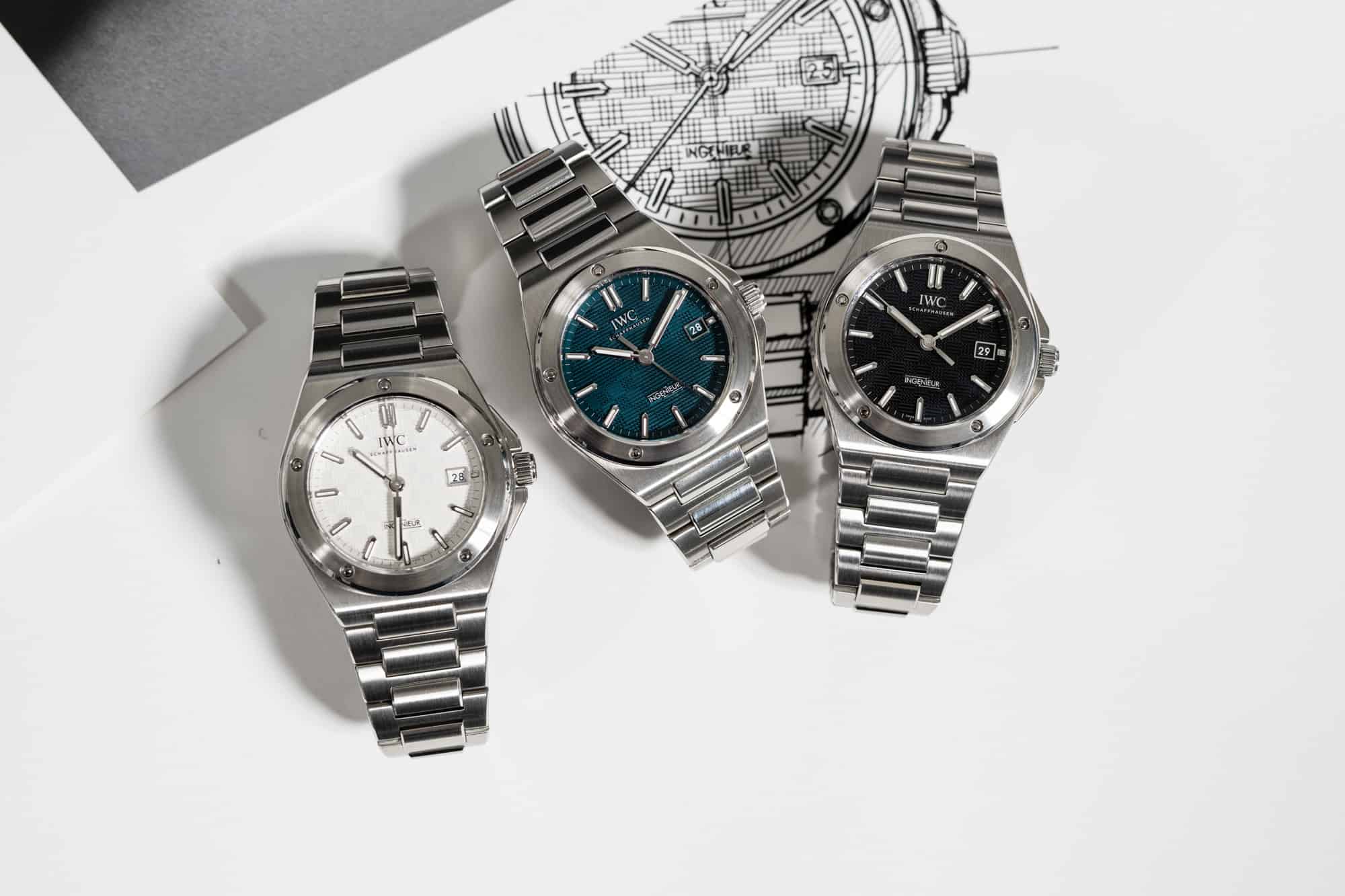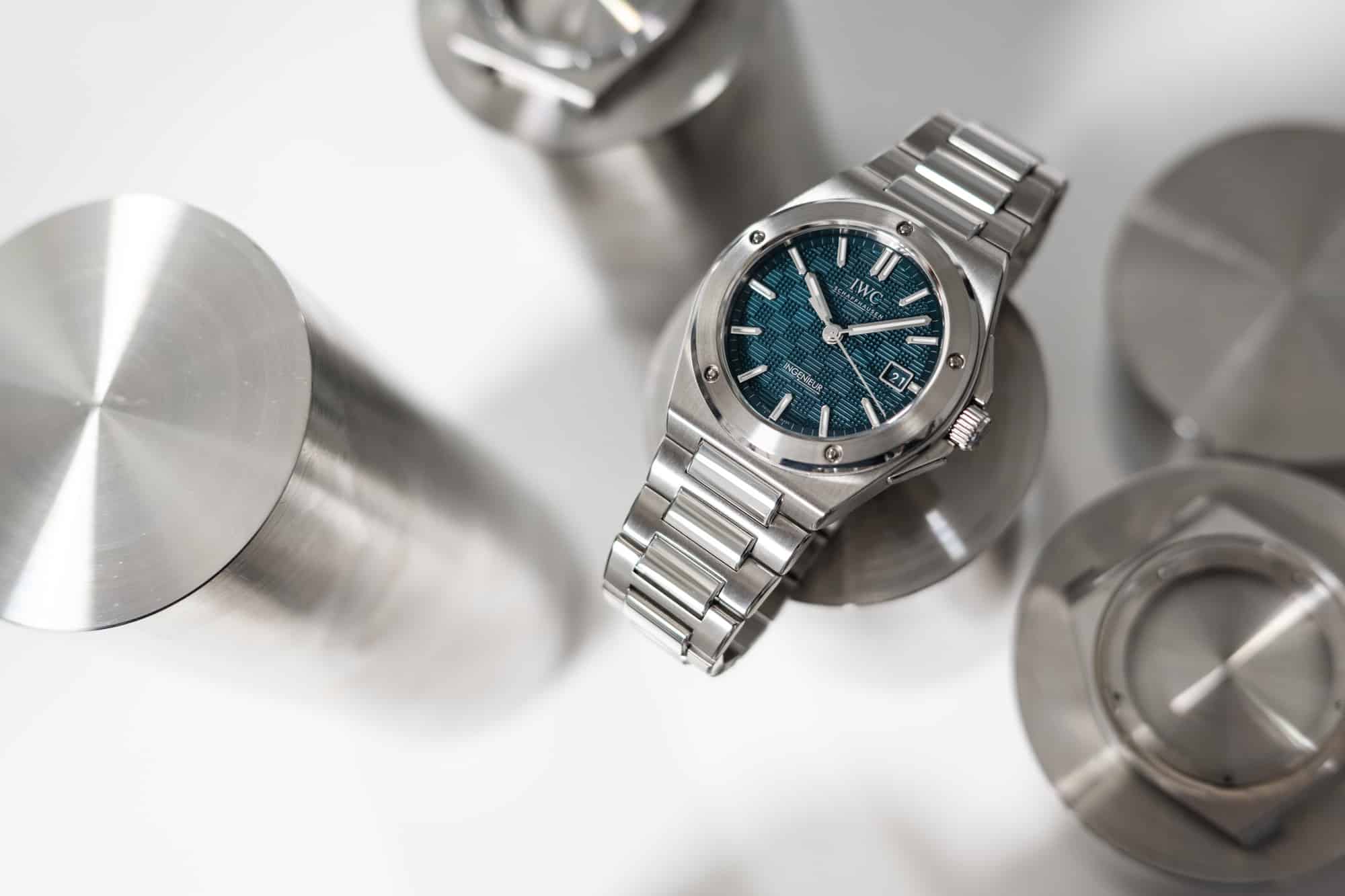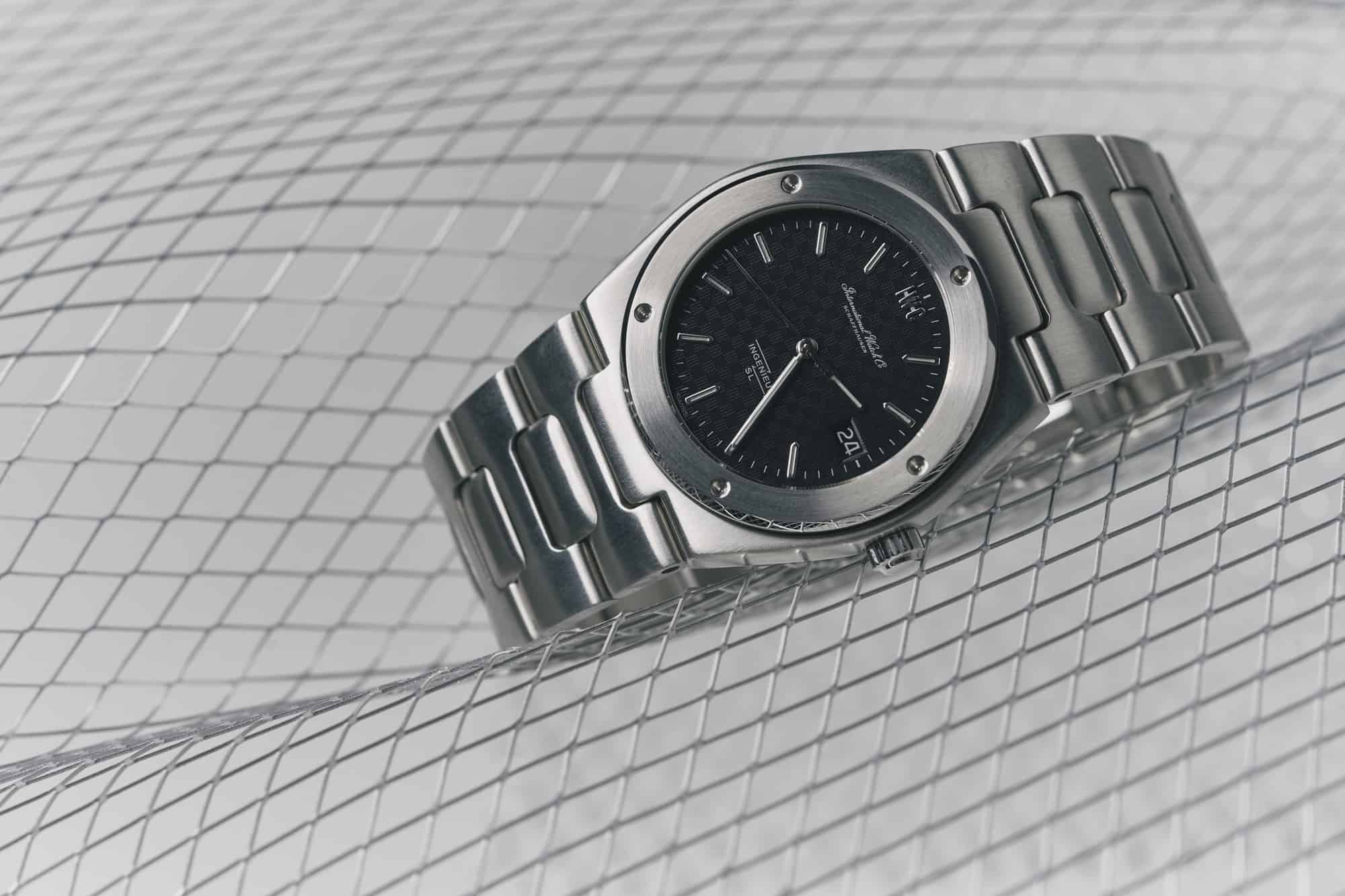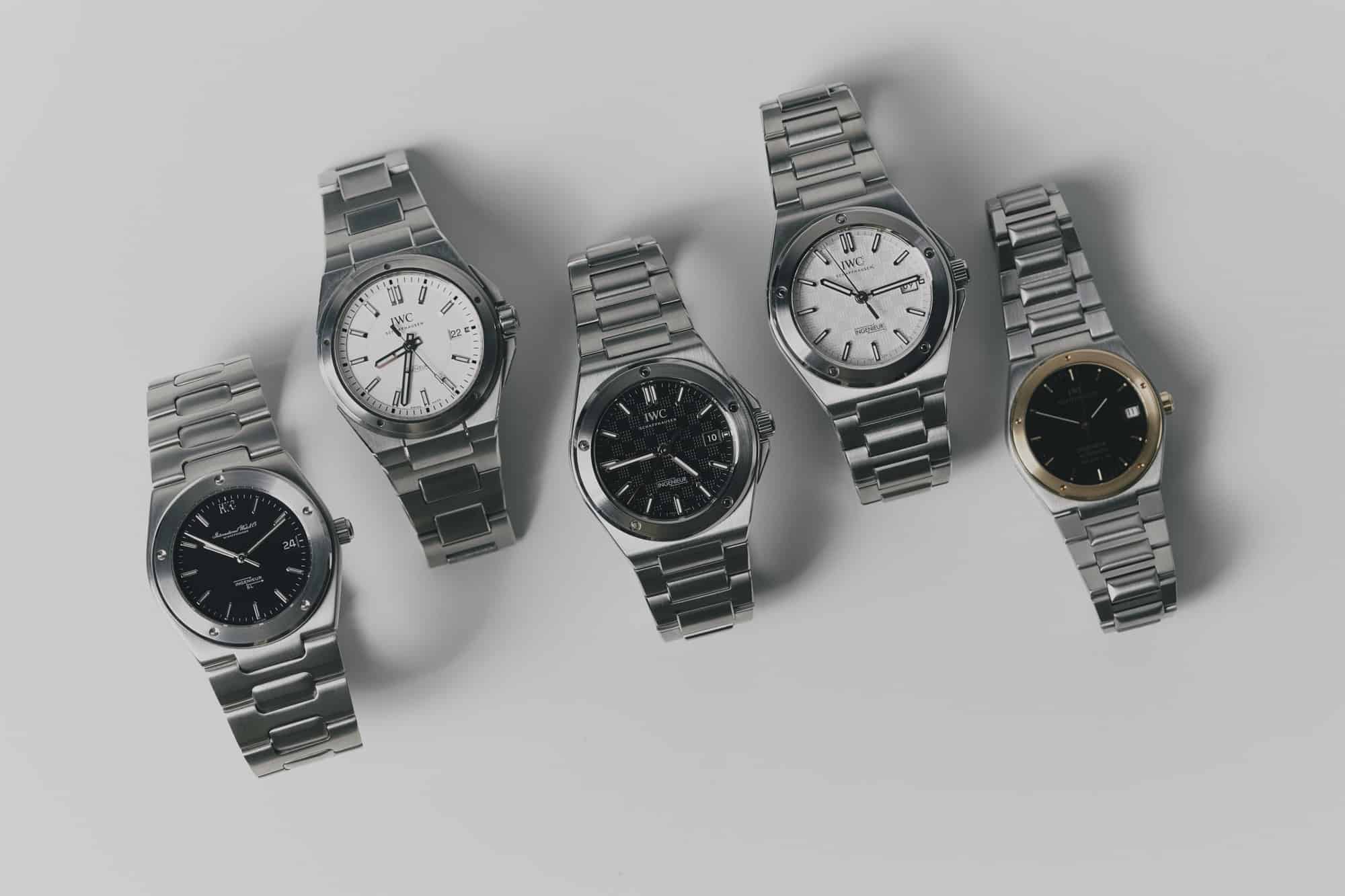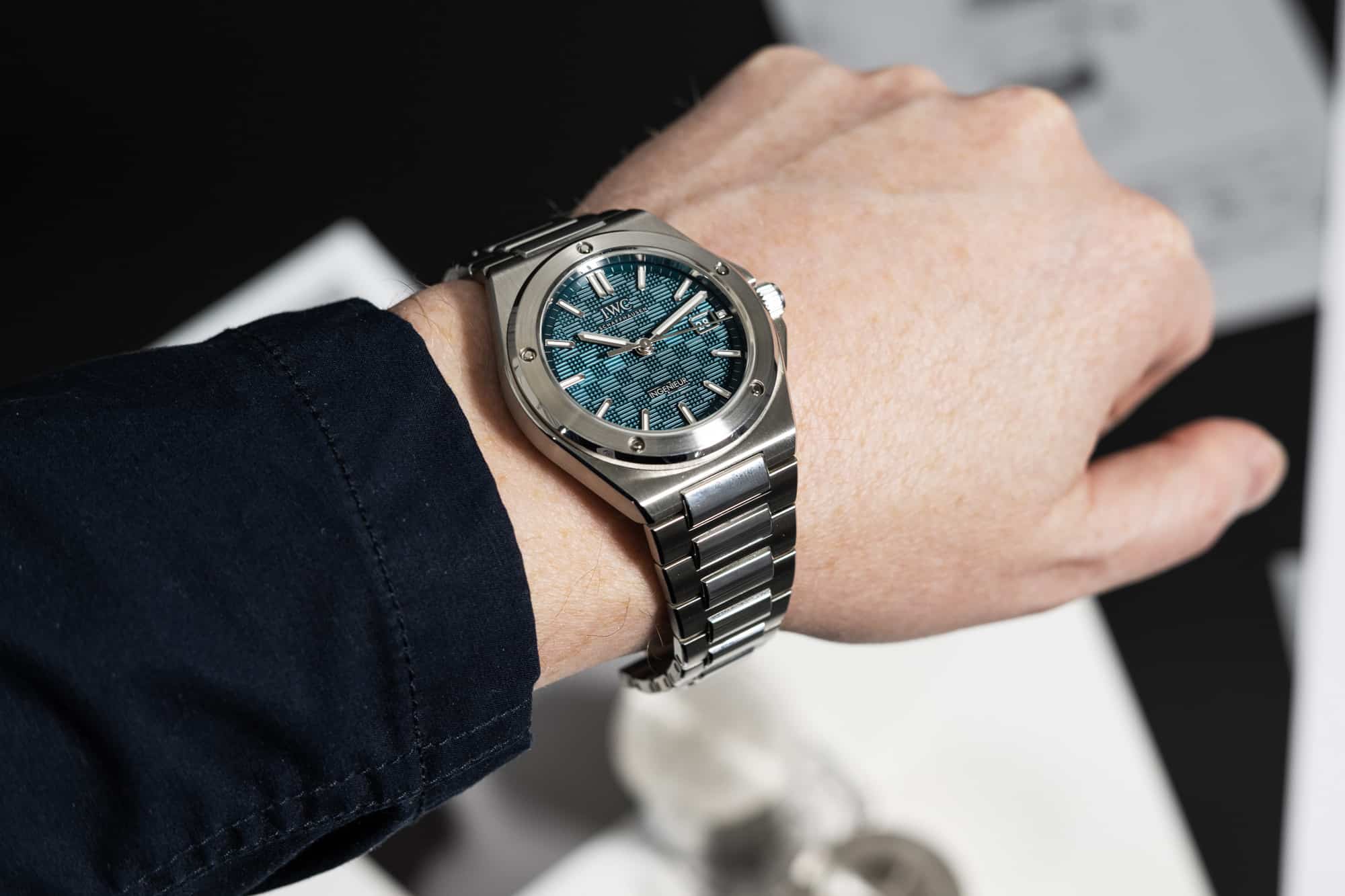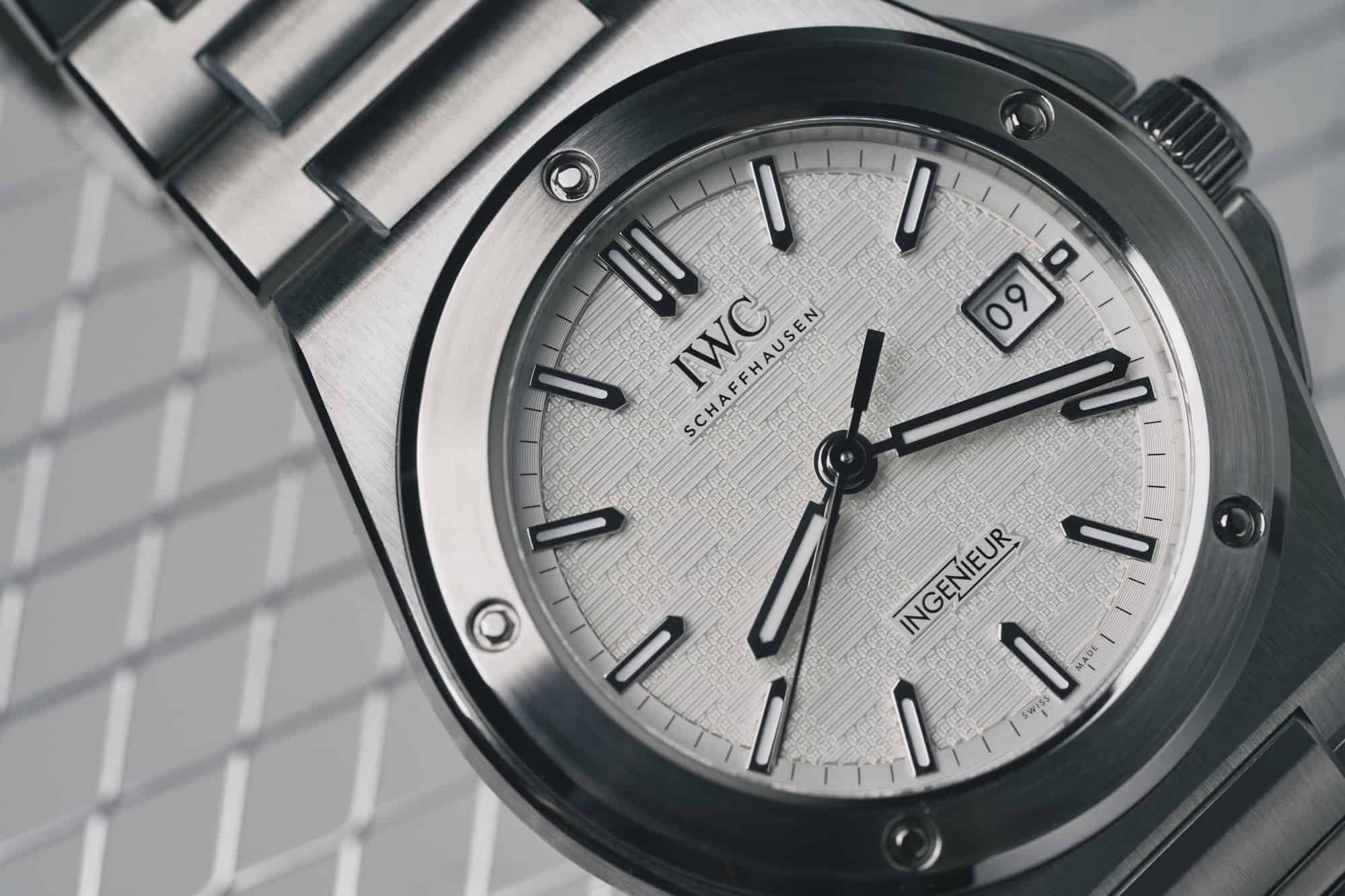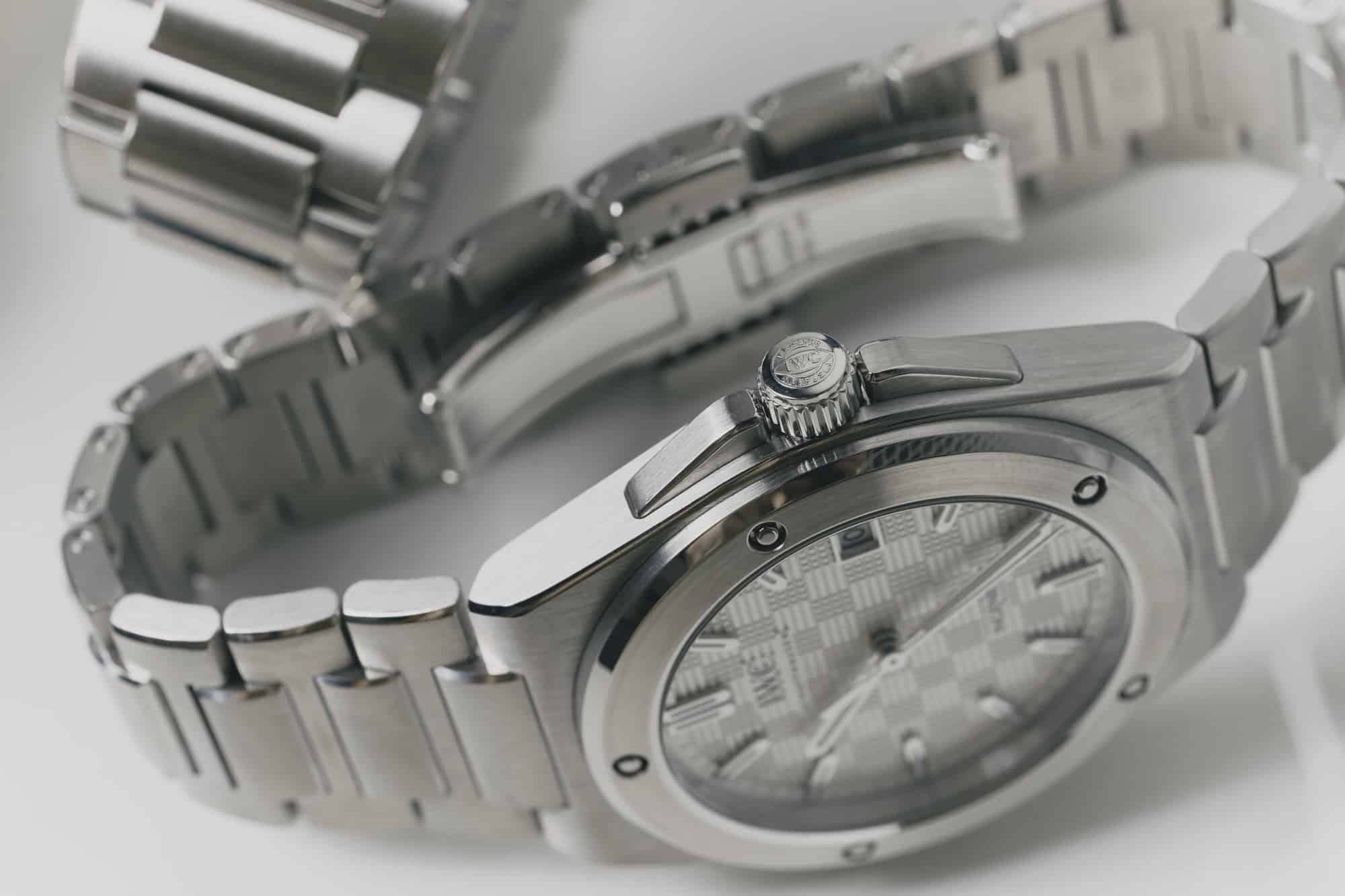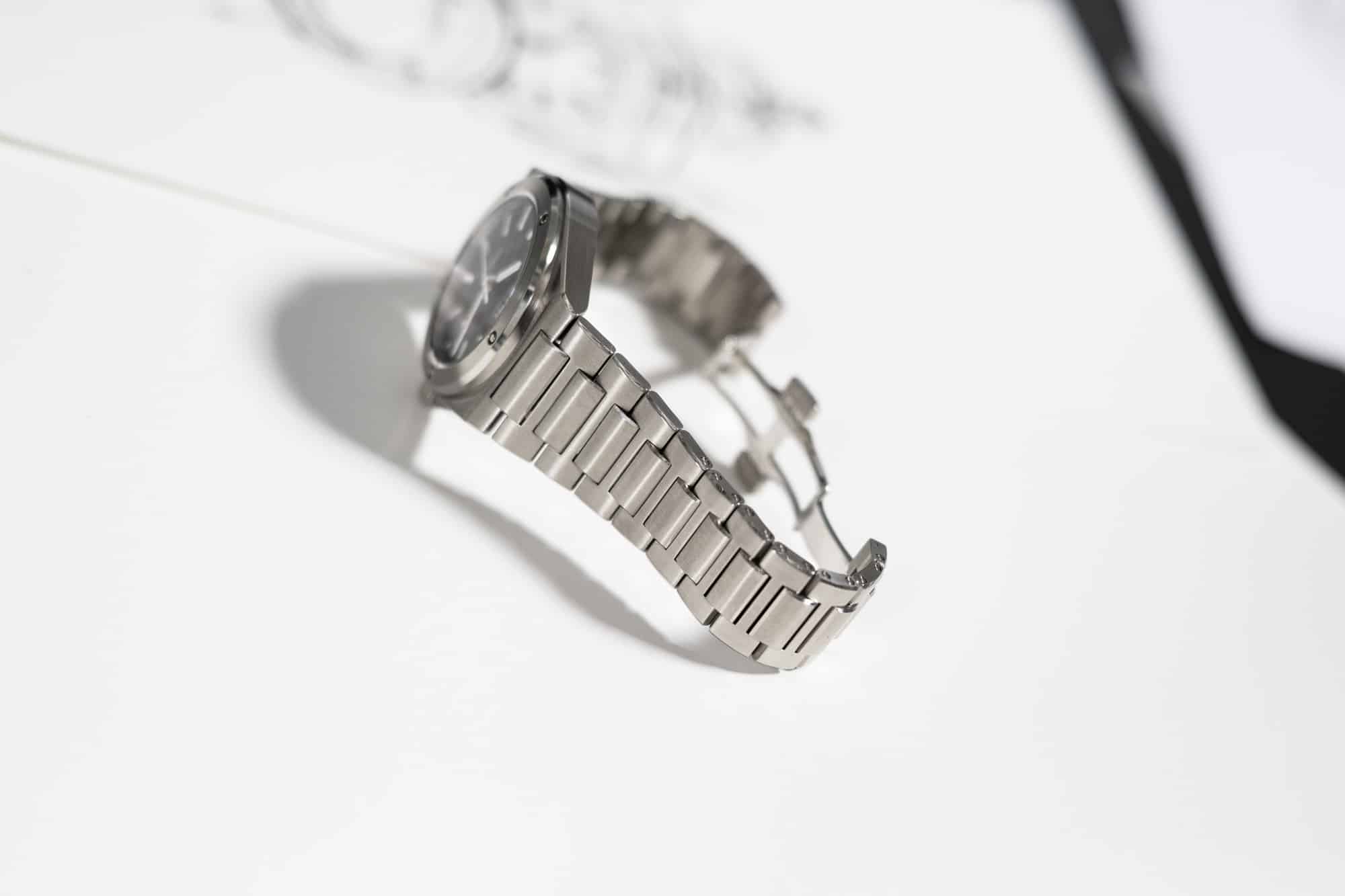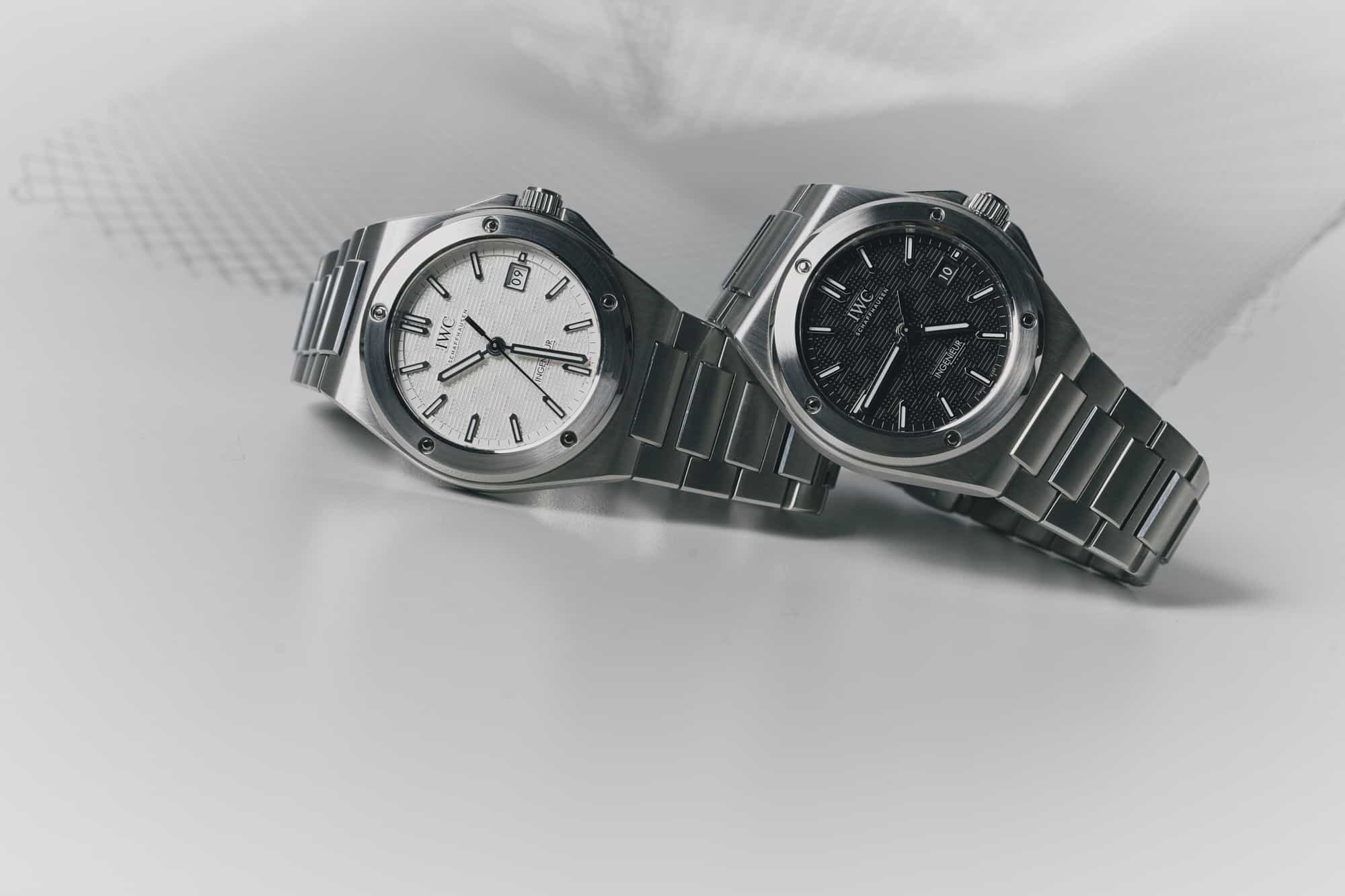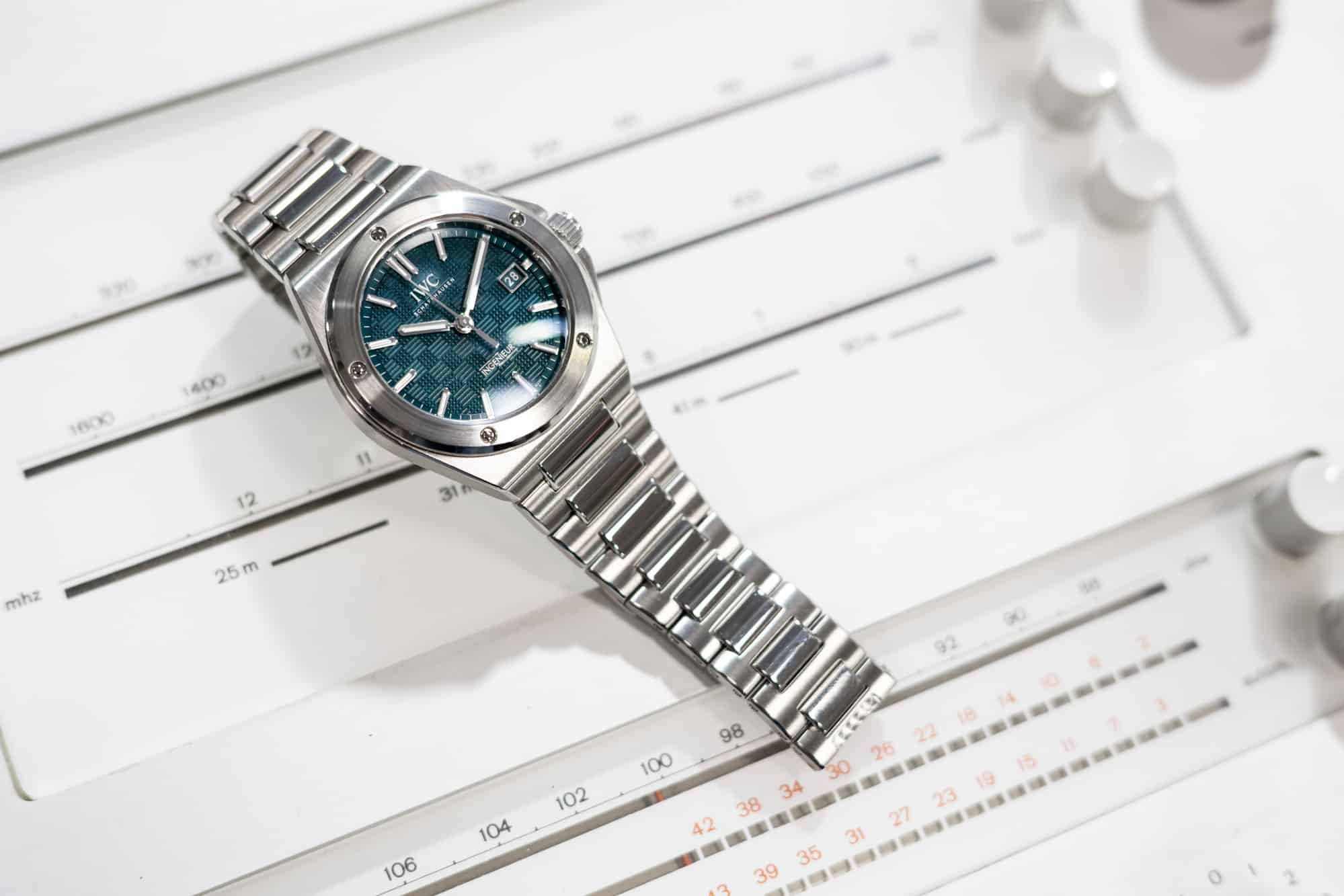The Ingenieur pivots back to its Gerald Genta design era this year with the introduction of a new collection that references the Ingenieur SL, reference 1832 from 1976. This is a move we (and likely, many of you) have anticipated since asking IWC CEO Chris Grainger about it back in 2021 on the Worn & Wound podcast (listen to that episode right here). The new Ingenieur collection welcomes three steel references that feature unique textured dials in silver, black, and aqua, and a full titanium reference with a gray dial. Each feature the new integrated bracelet design made famous by Genta in the ‘70s that we last saw in 2013 with the Ingenieur reference 3239. The new Inge takes a slightly softer approach and places an emphasis on ergonomics, and during our time with the watch in London last month, found it to be exactly that. This is the new Ingenieur Automatic 40 and yes, it still has a soft-iron inner case.
The Ingenieur has a rather interesting history that reaches back to 1955 with the reference 666, where it embraced a classic round shape and simple dial befitting of the era. It was launched around the same time as the Rolex Milgauss, and filled a similar role, making use of a soft-iron inner case to protect the movement from magnetic influence (up to 80,000 Amperes per meter). The name has roots in Old French and Medieval Latin, according to IWC, evolving from “ingeniator” or “one who makes or uses an engine”. The word Inegnieur evokes a similar vibe, and brings broader connotations of the word engineer into play in the process. While early Ingenieurs were certainly handsome watches, the watch wouldn’t get its first truly distinctive overhaul until 1976.









 Featured Videos
Featured Videos




